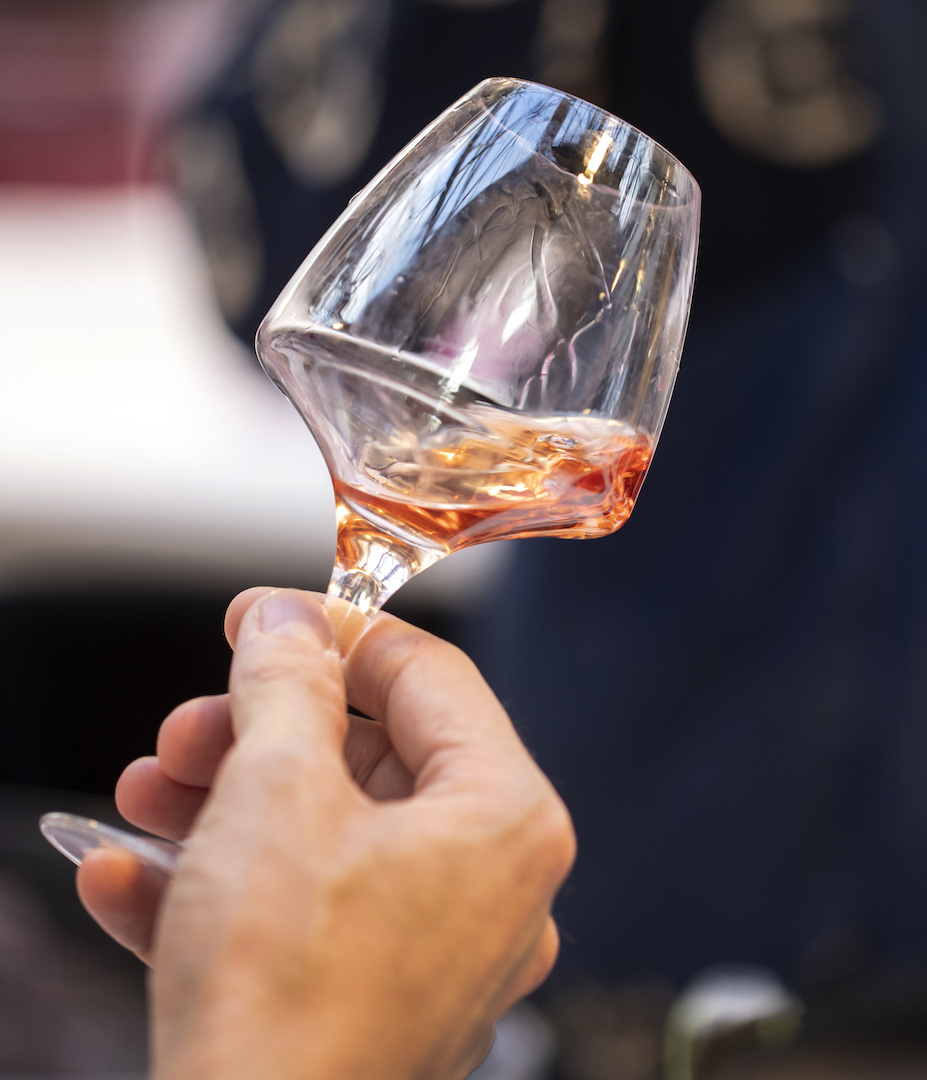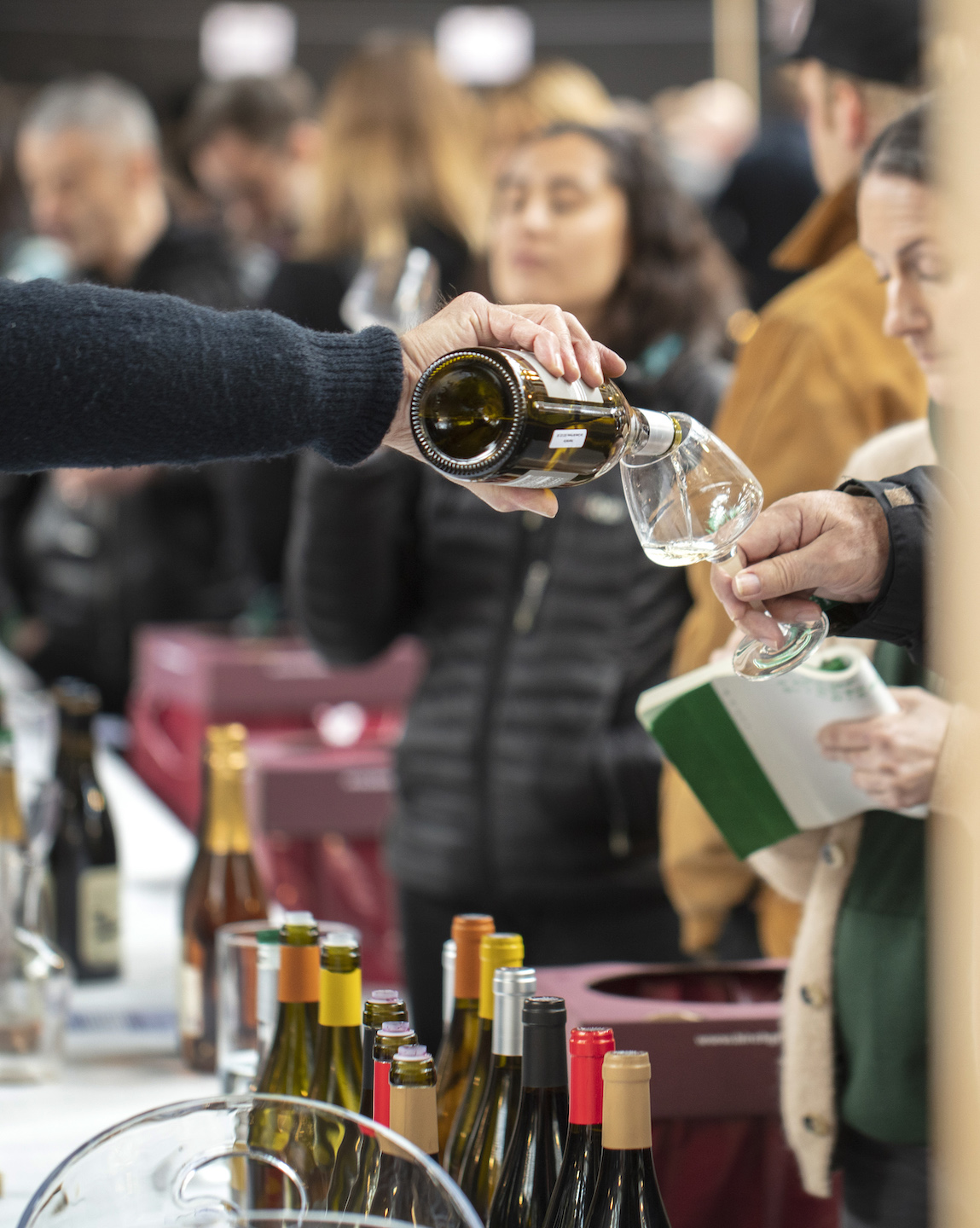This is a short addendum to the piece “Why Rowing Back is Not an Option”, written earlier this year, which expresses how the growth of natural wine has revitalised the wine world. I feel I should not have to defend something which has been a positive force and brought subjects such as ecological farming and additive-free winemaking into the limelight and compels us to debate the very nature of taste, and what constitutes quality.
When I speak about the cultural shift towards acceptance of natural wines in wine tastings and presentations, I am often questioned about what is going to happen next. Are the wines now mainstream, or will they ever become so? Or is the movement a trend, that like every dog, will have its day?
Some critical tasters have rowed back from liking the idea of the wines because they don’t want to be grouped with what they view as an undiscriminating “hipster” taste-community. The italics are important here. A particularly shallow motive if I may say so! Another reason cited is that as more and more growers jump on the bandwagon (so to speak), the number of faulty wines in circulation increases, particularly those exhibiting mousiness and levels of volatile acidity.
We should not tar all natty wines with same critical brush.
Of course, this is frustrating and annoying. One swallow of bad wine, however, does not make for a winter of discontent – and everything should be seen in context. We should not tar all natty wines with same critical brush. We should endeavour here to accentuate the positive, whilst not entirely eliminating the negative, and recognising that Mr In-Between can indeed be messed with. The truth about wine is rarely simple.
Natural winemakers and lovers of their wines tend to fall into two camps. Although I am wary even about this generalisation. The zero zero brigade prefer their wines purer than pure, free of any chemical intervention, even to the point of zero-sulphite addition. They formulate strict mission statements and establish tight groups. It is a caricature to assert these growers care more for the madness of the wine than the methodology behind it. To make great natural wine, you must first be able to make great wine. It is not the lack of anything added that makes the wine great, it is the absence of obvious additions that allows what is great already within the wine to shine most vividly and express itself most fully.
A larger and more mainstream grouping of natural vignerons adopt a more empirical approach. Ideally, they would love to make a zero-addition wine, but pragmatism dictates that the final product must be worthy of being consumed. There is a wide spectrum of wine styles and products represented in this grouping. Are the wines less natural for the small interventions used? And what limitations should be placed on these interventions?
Naturally, because human beings are political animals, natural wine has become politicised. Governmental bodies and appellations want control over the term “natural” and the growers themselves also want definitions (as a quality trademark). And because human beings are very human, there is exclusivity, snobbery and professional jealousy in the natural wine world.
The politics will continue to rage, and people will tie themselves in knots about the semantics and quiddities of natural. I know. I’ve spent years defining and redefining what a natural wine is, both in concrete and philosophical terms.
If ever I wonder whether my defence of natural wines is merely the echo of a former impetuous romantic youthful attachment to a countercultural cause, then I am reassured by my palate’s continued preference for these wines over conventional wines. Ironically, tasting conventional wines provides the evidence that I have not taken leave of my senses!
By preferring one style of wine, I never set out to avidly dislike another, but, if anything, these preferences have become entrenched over the years.
One famous wine writer described me as a fundamentalist. By which he meant that I cared more for the spirit in which the wine was made, rather than how nice it was to drink.
Anything but.
Our aim on this evening wasn’t to be obnoxiously critical about conventional wine nor point out deficiencies in the wine list, rather it was simply to find a bottle of wine that was engaging and drinkable.
I am not a confident taster. I crave reassurance. I listen to the reactions of others to the wines for clues to how the wine is showing. Every wine I taste is a new experience. If you tell me it is a natural or a conventional wine, I am still open as these terms don’t really matter to me. The wines I like the most are the wines that I feel I wish to explore further. And drink a second and third glass of. A huge number of wines that I taste I would not allow them to pass my lips again.
Two recent examples to illustrate my almost 100% strikeout with conventional wines of almost every hue. One was an experience in a Michelin restaurant. Four of us sat down to a celebratory dinner, ready to plunder a wine list which was fairly sizeable, classic, and not very interesting, seemingly a selection of bottles where boxes had been ticked rather than strong preferences exerted on the basis of taste. I was given first choice. Being a big fan of wines from this region, I opted for a Jurançon – from a biodynamic grower. Near Steiner at least, if not to God! Alas, alack, and yuck, the wine was completely stifled by sulphur. Bottle after subsequent bottle from well-known producers and classic appellations fell well short of our expectations (and simple needs) scarred variously by over-enthusiastic sulphite addition, or lumpen with extraction and/or oak. Flaccid wines. Flat and lifeless wines. At the end of this expensive evening of non-drinking, we looked at each other and our mouths formed the same question: Why? Why do conventional producers employ clunky oenological techniques and tropes which strip wines of their inherent drinkability? Why do restaurants list these frankly expensive and pretentious wines without evaluating whether they are worth the candle? Why do customers order these wines and not complain about them? Our aim on this evening, after all, wasn’t to be obnoxiously critical about conventional wine nor point out deficiencies in the wine list, rather it was simply to find a bottle of wine that was engaging and drinkable.
While I don’t believe there is a conspiracy to defend conventional wines, whenever I have been invited on tasting panels I have discovered that a happy consensus (unhappily) prevails. As long as they are clean, the consensus is that wines ought to be accepted. And the more “work” that goes into the wines to make them (superficially) impressive, the more highly valued they should be (in terms of points and medals). Technical correctness is such a low bar to set for taste. But we are taught to appreciate wine thus and view it in terms of how it conforms to critically established evaluative norms. A lover of living wines, I find these tastings incredibly dispiriting, with some of the wines so milquetoast in nature, or overelaborated, that they scarcely merit the descriptor “wine.”
Technical correctness is such a low bar to set for taste.
The memory of our seven-bottle-Michelin-star-trauma saga had scarcely faded when I did a tasting for a sommelier featuring a mix of conventional and natty bottles. Although a brief may demand occasionally that I show conventional wines at a certain price, I always try to slip wines that will not “frighten the horses” whilst at the same time preserving their natural integrity.
We began the tasting with two serious Italian whites. Serious, as in highly competent and evidently oenological wines. The first, a Greco, was overtly fruity with almost bubblegummy notes, with just enough acidity to prevent from being 5-Alive. There followed a Fiano with more mineral drag and some reduction. Two things were noticeable: the use of yeasts (particularly evident in one wine), the cool fermentation aromatics; the high degree of filtration and the palpable perception of sulphur on the tongue. The final wine in the southern Italian trio was a very low intervention Greco Bianco from Calabria. The wine was a touch hazy with some browny-orange tartrate crystals lurking at the bottom. The nose was so appealing, mixing citrus with herbs, and the palate was the same, light, tangy with a suggestion of the macchia running through it, all finishing with the telltale lick of mineral salts. A tonic wine. One that made you want to swallow it and smack your lips in satisfaction.
On to some rosés. Two clean, concise and filtered. One rudely savoury, smoky, with a panoply of different flavours. Guess which one we preferred?
And the same feeling applied to the remainder of the wines we tasted. The natural wines, whether cheaper or the same price or more expensive, were so much more interesting and gastronomic. Much of this comes back to the perception that wines made without additives seem that much more alive. They have not been shocked into metallic inertia by additions of SO2 and strip filtering techniques. They are the result of complex fermentations, rather than controlled cold ones. They are not about cold profiling, a term I use to describe wines that are created for a specific audience or critical palate.
Would the more natural wines, as straight as they might taste to a professional palate, pass muster in a restaurant where customers largely default to the tried and trusted? The wines merit their place on the wine list, sure, but if they don’t shift, or the customer finds them problematic (crystals in wine? Big no no!) what is the point in them taking up space in the cellar?
One has to tread that wobbly tightrope between accepting what the customer wants and influencing them to buy the wine that you would like them to drink
Rather than apologise for natural wine looking cloudy or tasting different to the same old, our gatekeepers need to be confident in their ability to explain – and steer customers towards – the wines. The palate of an individual can change if that individual is exposed to something delicious. Maybe we need to provide a different language for those selling the wines to communicate what is different about the wines. The tricky part is where one is selling both classic/conventional wines and more artisan low intervention wines on the same list and one has to tread that wobbly tightrope between accepting what the customer wants and influencing them to buy the wine that you would like them to drink.
Some drinkers are naturally conservative. In fact, they embrace the certainty of not deviating from their tried-and-trusted wines. It is as if they have entered into an unbreakable contract with their own palate – and they know what is good (for them). It’s never too late to start these folks on a taste journey, by accentuating the natural and gradually eliminating the conventional.



